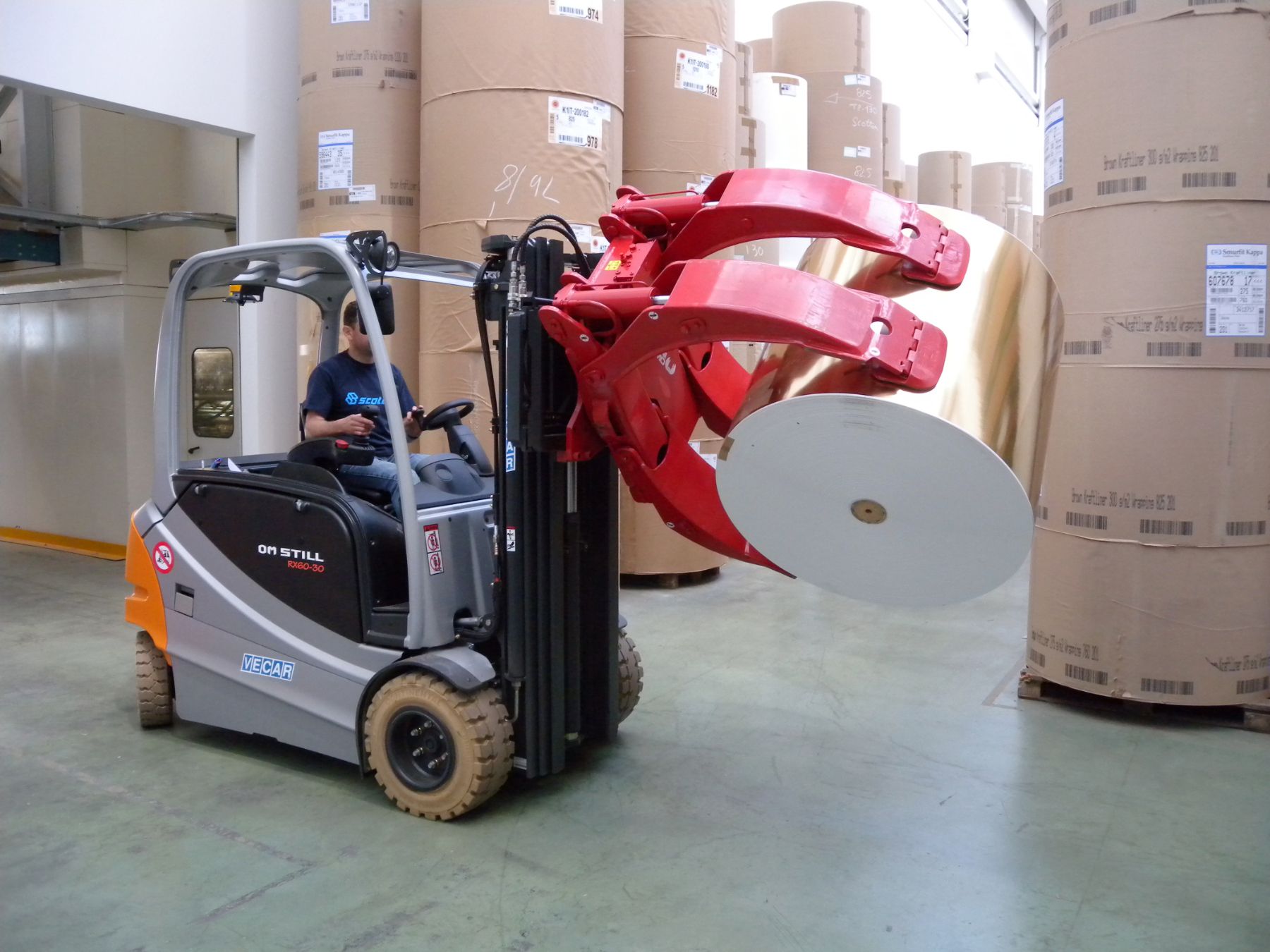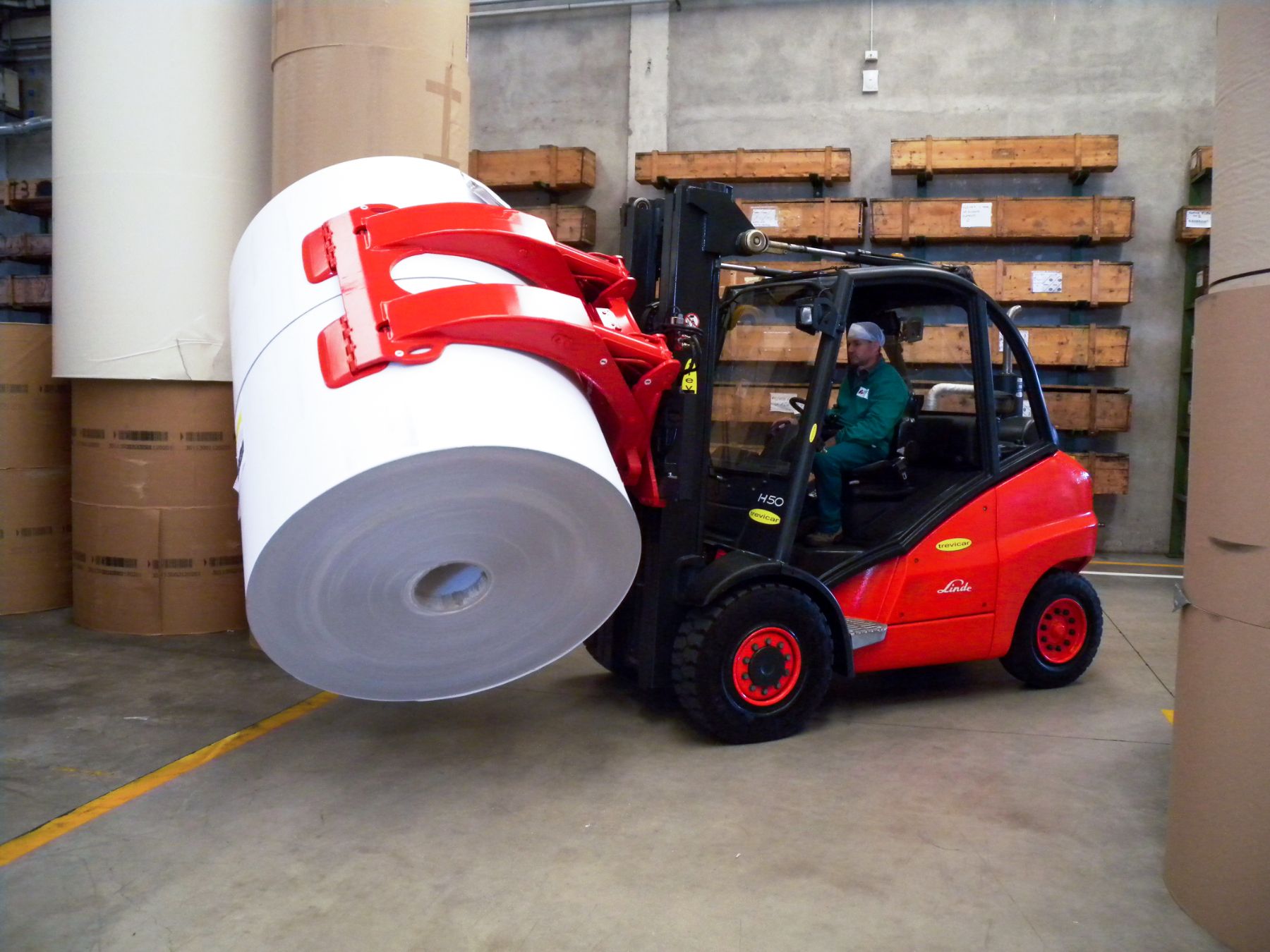Companies talk > Interview with Bolzoni S.p.a.
Interview with Bolzoni S.p.a.
- Company year of incorporation: 1945
- Year of association to the Consortium: 1968
- Turnover class: 170 mln
- Products: lift truck attachments, forks, lift tables, handling solutions for fork lift OEMs
Industries: forest products, white goods, logistics, food and beverage, chemical, automotive, AGV, etc - Foreign markets: Europe, Americas, Asia, Middle East, Africa
Good morning Dr. Lucchini, Export Sales Manager, can you tell us about the history of the Bolzoni S.p.a., a historical company which was one of the founding companies of CEPI Consortium in 1968? The company started from scratch and had a very strong export vocation from its very beginning.
Good morning, yes I confirm the great vocation towards export, indeed the company is likely better known and rooted abroad than in the local territory. For sure, the early stages of Bolzoni's history are linked to the Piacenza area. The company was founded in 1945 when the brothers Luigi and Livio Bolzoni began transforming American military vehicles into agricultural equipment and machinery. Afterwards they will dedicate themselves to the construction industry with systems for transporting bricks. Starting in the 1960s, the two brothers realized that logistics and the handling of goods would become opportunities for business success during the Italian economic boom, and as we will see, they were not wrong.
They therefore turned to generalized logistics, without however producing forklifts, but producing everything that could be installed in front of the machine, that is, on the fork carrier plate. Equipments were produced for handling different types of cargo with the idea, which would prove to be particularly successful in the years to come, of preventing damage to the goods handled. Furthermore, in the 90s, a key to success was the ability to make agreements with the large forklift manufacturers to integrate Bolzoni equipment on existing machines and, consequently, the possibility of being introduced into existing and strongly established distribution structures.
In the 1960s, the production of side shifters, fork positioners, parallel clamps, clamps for paper rolls, clamps for multiple pallets began: a range of production that extended to the handling of products from the so-called "white" industry or household appliances.
And it was particularly in the case of the handling of household appliances that the “damage prevention” philosophy proved successful. Even for the paper industry, where it is sufficient to tighten the reels a little more to deform and damage them, the idea of producing equipment that prevented damage during handling was a winner because such damage constitutes a significant loss in the end of the budget year.
If we consider the massive turnover of logistics and handling operators and how often there is poor training of the operators themselves, the potential collateral damage count is such as to fully justify the use of devices that prevent damage to the goods handled such as those of Bolzoni.
Another driving force behind the success of the Bolzoni company has been its broadness of products range: over the years the company has been able to offer the world of internal and external logistics a variety of different solutions for very different industries, allowing to the company not to suffer from any crisis in this or that sector, but giving the possibility of following the leading markets with specific solutions for each industry. For example, in 1987 the merger with the Italian Teko S.r.l., specialized in the production of manual pallet trucks and lifting platforms, made it possible to expand the range of products for logistics and to acquire important know-how in other sectors of industrial handling.
Returning to the internationalization discourse, we can say that the real transition to exports comes after 1975 with the first foreign branch: Bolzoni France based in Chartres. The French market was and is the third most important market in Europe after the German and Italian ones. It is important to underline that Bolzoni's philosophy abroad has always been, also with Mr. Scotti's entry into the company, that of not selling or distributing products without a local presence: this has always been a distinctive element from the competition. And this presence is not just on paper with just a phone number, but with facilities, warehouse, local sales and technical assistance staff.
Following this philosophy, in 1987 a branch was opened in the United Kingdom while in 1989 we landed in the USA with the first production plant in Chicago (the first commercial branch was in North Carolina).
Entering the USA was like stepping into the wolf's lair as Bolzoni's main competitor was precisely in the United States, but this market was and is among the most important in the world, not so much for the number of forklifts sold, but for the number of equipment proportionally mounted on them.
Beyond the various stages of Bolzoni's international expansion, another important element of Bolzoni's philosophy towards export was to entrust its growth not only to the expansion of its production and distribution, but also to the acquisition of other companies that could give the know-how and recognisability of a specific product niche, so to have a wider and transversal range offer of services.
Perhaps the most important case was that of the acquisition of Auramo in 2001, a leading Finnish company that gave us the opportunity to make the leap in quality for the paper sector. Likewise, in 2006 following the listing in the Star segment of the Italian Stock Exchange, Bolzoni acquired Meyer, a historic German group leader in the production of multipallet handlers, rotators and other specialized equipments.
These three acquisitions (Teko, Auramo and Meyer) constituted the main assets that marked the development and growth of the company in production and also in internationalization: in fact, in addition to know-how and production, the entire distribution networks of the acquired companies were merged with those of Bolzoni, with a resulting synergy that is very important for the widespread extension of our sales network.
For reasons of time and space, I cannot give you the details of all the growth steps, of the various production and engineering plants that Bolzoni has progressively launched in Europe and North America, but I can confirm that the Bolzoni's philosophy of being rooted in territory continued over the years and was further strengthen after 2016 with the acquisition by the Hyster-Yale group and the creation of the Sulligent plant in Alabama for 28,000 square meters.
We talked about Europe and America, what are the other geographical areas covered by Bolzoni?
After Europe and North America, Bolzoni's third market was China and Southeast Asia. The importance of this market is underlined by the fact that China is the country with the largest number of forklifts sold, even if the number of equipment installed per forklift is lower than the American one: this shows us that despite being a large market with important numbers, at the present time the technological level is still lower than that of the West. However potentially, if China follows the same development trend as the United States, it would have enormous potential for Bolzoni's equipment sales.
Also in this case the approach was that of rooting in the territory, first of all through a small presence in Shanghai with a production plant of 3,000 square meters, around 2004. This plant was obviously not sufficient for the size of the market and at the turn of 2010 it was decided to start with a Chinese production development project: a holding company for the management of two production plants, one dedicated to the production of the range dedicated to China and Southeast Asia, and then a second plant for the exclusive production of forklift forks.
To date, therefore, Bolzoni Spa counts on the presence of 20 foreign branches of the group and where we are not directly present, we interface with independent distributors with exclusive one-to-one relationships: through independent dealers we cover the areas of Eastern Europe, South Africa, the Middle East and part of South East Asia.
In any case, an after-sales technical assistance service is provided for all the dealers and branches of the group, which is an important convincing lever for an on-demand product such as Bolzoni's forklifts equipment.
The only area that remained partially uncovered was South America: a gap that we filled in 2018 with the opening of the branch in Brazil. The branch is located in the state of Espirito Santo, with a limited production plant, but still an important direct presence that serves also the other countries of South America.
We have seen a success story that begins after the war and reaches the present day. At this point it is difficult to ask, what is the area for further development?
There are at least two growth drives for Bolzoni's future, one in the area of geographical expansion and one for the technological implementation of the products.
From a geographical point of view, we aim to root our presence in India and find a winning formula for the African market, which for future prospects will be the most important market in terms of potential. In fact, today we cover South Africa, but we must and can invest and achieve a lot more.
From a technical point of view, however, a further step towards the future was the opening of the Research and Development unit of Bolzoni S.p.a. with an ad hoc plant where we have installed laboratories and test rooms to enhance the company's engineering. The group is therefore organizing itself with a main engineering head in Italy, but also with offices in the main foreign production sites (in particular China, USA and Germany).
We are certainly a company that invests by trying to read the future in advance, even by taking on considerable risks during the investment phase. For example, with a look towards the future, today we are witnessing the introduction of automation in the logistics field with driverless vehicles or AGVs (Automated Guided Vehicles). Consequently we created a separate business unit to develop products that integrate with automated forklifts. A sector that is still highly specialized today, but which promises extremely important growth given the trends in integrated logistics.
To end this narration of a success, can you mention Bolzoni's international marketing tools and the role that CEPI played for your company?
Surely Bolzoni has made use of all the traditional promotional tools such as fairs, b2b meetings and partner research, often relying on CEPI services as in the case of the recent research for the Israeli market.
We have also made extensive use of the foreign chamber of commerce network and tools for market knowledge, the search for distributors and partners in distant markets.
Today we are working on the digital marketing and digital fairs front that gave us modest but appreciable results. We have also developed a new digital platform to systematically serve the world of used equipment rental, allowing, through our portal, to have a complete overview of all the equipment available in Europe and beyond for Rent.
I can certainly confirm that the possibility of interfacing with CEPI was of great importance from the very beginning, and it is no coincidence that Bolzoni was one of the founding companies of the same Consortium. The history of Bolzoni itself is a proof of how much this Consortium has contributed to the growth of the company on markets around the world.
.jpg)
.jpg)

.jpg)

.jpg)
.jpg)
.jpg)
.jpg)
.jpg)
.jpg)
.jpg)
.jpg)